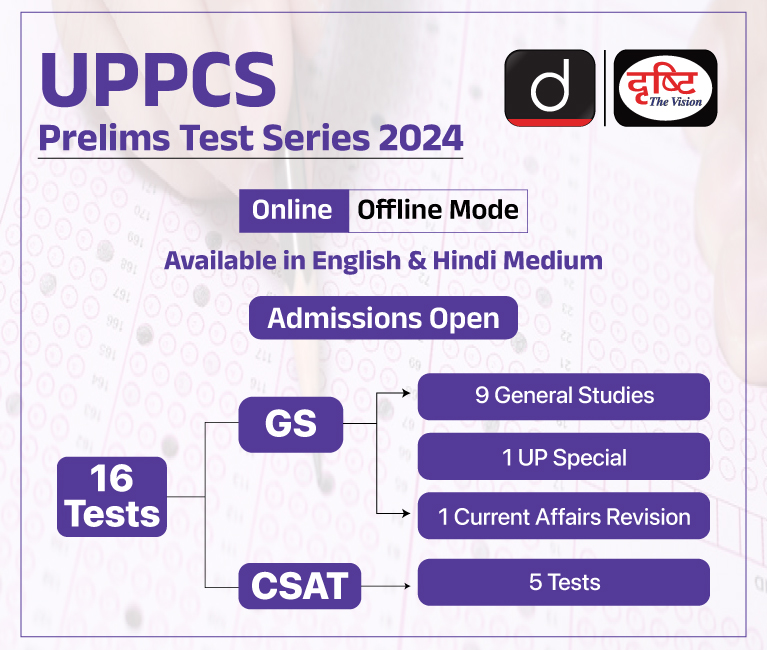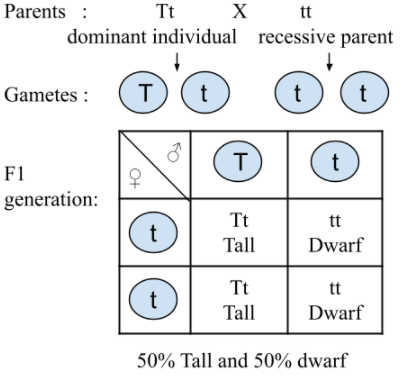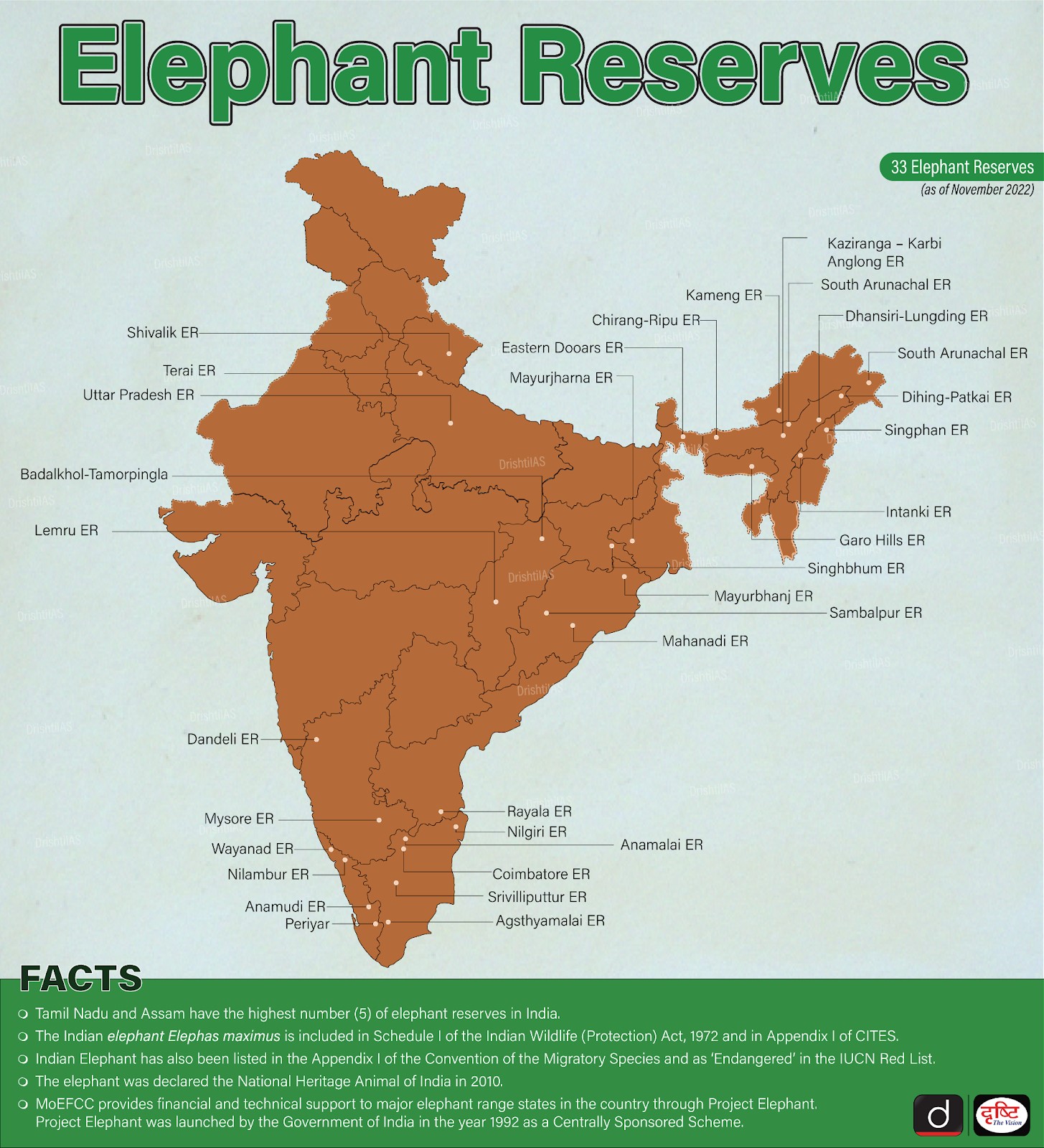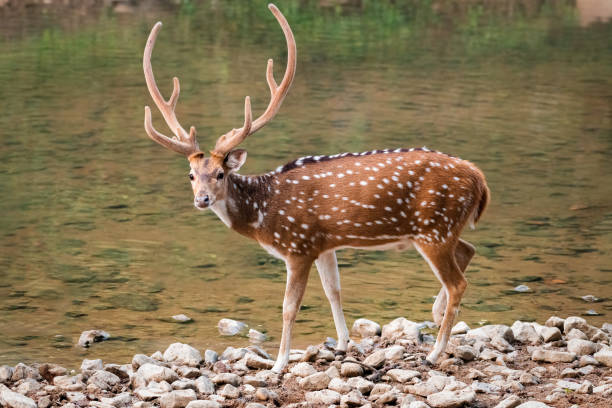Indian Polity
Constitutional Morality
For Prelims: Constitutional morality, Pillars of Constitutional Morality, Conditional Morality and Indian Constitution, Directive Principles of State Policy, Fundamental Rights, Amended IT Rules 2023, Appointment Committee for the Election Commission
For Mains: Challenges to Constitutional Morality in India, Judicial Pronouncements Related to Constitutional Morality in India.
Why in News?
The recent arrest of a serving chief minister on corruption charges raises legal, political, and constitutional concerns and poses questions about its consistency with constitutional morality, especially in a parliamentary democracy like India.
What is Constitutional Morality?
- About:
- Constitutional morality (CM) is a concept that refers to the principles and values underlying a constitution that guide the actions of both the government and the citizenry.
- The concept of constitutional morality was propounded by the British Classicist George Grote in the 19th century.
- He described CM as a “paramount reverence for the forms of the Constitution” of the land.
- In India, the term was first used by Dr. B.R. Ambedkar.
- The concept of constitutional morality was propounded by the British Classicist George Grote in the 19th century.
- Constitutional morality (CM) is a concept that refers to the principles and values underlying a constitution that guide the actions of both the government and the citizenry.
- Pillars of Constitutional Morality:
- Constitutional Values: Upholding the core values enshrined in the Constitution, such as justice, liberty, equality, fraternity, secularism, and the dignity of the individual.
- Rule of Law: Upholding the supremacy of the law where everyone, including government officials, is subject to and accountable under the law.
- Democratic Principles: Ensuring the functioning of a representative democracy where citizens have the right to participate in decision-making processes and hold their elected representatives accountable.
- Fundamental Rights: Respecting and protecting the fundamental rights guaranteed by the constitution, such as the right to equality, freedom of speech and expression, right to life and personal liberty, etc.
- Separation of Powers: Maintaining the separation and balance of powers between the legislative, executive, and judicial branches of government to prevent any one branch from becoming too powerful.
- Checks and Balances: Establishing mechanisms and institutions that provide checks and balances to prevent abuse of power and protect the rights of individuals.
- Constitutional Interpretation: Interpreting the constitution in a manner that promotes its underlying principles and values while adapting to changing societal needs and circumstances.
- Ethical Governance: Ensuring ethical conduct in governance, transparency, accountability, and integrity in public service.
- Constitutional Morality and the Indian Constitution:
- The term "constitutional morality" is not explicitly mentioned in the Indian Constitution.
- However, the concept is inherent in the document's core principles, emphasising values like justice, equality, and liberty.
- These principles are found throughout the constitution, including the Preamble, Fundamental Rights, and Directive Principles of State Policy.
- Its essence is also reflected in various Supreme Court judgements.
- The term "constitutional morality" is not explicitly mentioned in the Indian Constitution.
- Judgments Upholding Constitutional Morality:
- Kesavananda Bharati v. State of Kerala, 1973: This case established the "basic structure doctrine," which essentially limits Parliament's power to amend the Constitution and ensures its core principles remain intact.
- This can be seen as an early instance of the court upholding the spirit of the Constitution.
- SP Gupta Case (First Judges Case), 1982: The Supreme Court labelled a constitutional breach as a severe violation of constitutional morality.
- Naz Foundation v. Government of NCT of Delhi, 2009: This judgment decriminalised consensual same-sex relationships between adults.
- The court emphasised that "constitutional morality" should prevail over societal perceptions of morality, upholding individual rights.
- Manoj Narula v. Union of India, 2014: SC stated that "Constitutional Morality means to bow down to the norms of the Constitution and not act in a manner which would become violative of the rule of law of action in an arbitrary manner.
- Indian Young Lawyers Association v. State of Kerala (Sabarimala Case), 2018: The court struck down the practice of excluding women of a certain age group from the Sabarimala temple.
- It emphasised that "constitutional morality" includes principles of justice, equality, liberty, and fraternity, which outweighed religious customs restricting women's entry.
- Navtej Singh Johar v. Union of India, 2018: This case read down Section 377 of the Indian Penal Code, which criminalised homosexuality.
- Kesavananda Bharati v. State of Kerala, 1973: This case established the "basic structure doctrine," which essentially limits Parliament's power to amend the Constitution and ensures its core principles remain intact.
- Challenges to Constitutional Morality in India:
- Political Interference: One of the significant challenges is political interference in the functioning of constitutional bodies and institutions.
- This interference can undermine the autonomy and impartiality of these institutions, affecting their ability to uphold constitutional values.
- For example, there has been criticism surrounding the recent changes to the appointment committee for the Election Commission of India and the amended IT Rules 2023.
- Judicial Activism vs. Judicial Restraint: Balancing judicial activism with judicial restraint is another challenge.
- While judicial activism can promote the protection of rights and enforcement of constitutional values, excessive activism can encroach upon the domain of the executive and legislature.
- Enforcement and Compliance: Despite having a robust constitutional framework, ensuring effective enforcement and compliance remains a challenge.
- Implementation gaps, delays in justice delivery, and lack of awareness about constitutional rights among the general populace contribute to this challenge.
- Political Interference: One of the significant challenges is political interference in the functioning of constitutional bodies and institutions.
Way Forward
- Strengthening Institutions: Upholding constitutional morality necessitates strengthening the independence, integrity, and effectiveness of institutions such as the Election Commission, National Investigation Agency (NIA) and Central Bureau of Investigation (CBI).
- Ensuring transparent appointments, reducing political interference, and enhancing accountability mechanisms are critical steps.
- Promoting Civic Education: Increasing awareness and understanding of constitutional rights and values among the public, especially youth, is vital.
- Civic education programs in schools and colleges can instil a sense of constitutional responsibility and empower citizens to participate meaningfully in democratic processes.
- Enhancing Access to Justice: Improving access to justice, particularly for marginalised and vulnerable communities, is essential for upholding constitutional principles.
- This includes expanding legal aid services, reducing judicial backlog, simplifying legal procedures, and promoting alternative dispute resolution mechanisms.
- Encouraging Ethical Leadership: Promoting ethical leadership and governance practices at all levels is vital for upholding constitutional values.
- Leaders and public officials should demonstrate integrity, accountability, and a commitment to serving the public interest, thereby setting a positive example for society.
- Adapting to Evolving Challenges: Continuously adapting legal and institutional frameworks to address emerging challenges to constitutional morality, such as technological advancements, globalisation, and environmental concerns, is necessary for relevance and effectiveness.
Do Chief Ministers in India Lack Immunity from Arrests?
- Constitutionally, only the President of India and Governors of states enjoy immunity from civil and criminal proceedings until the conclusion of their terms.
- Article 361 of the Constitution stipulates that these officials are not liable to any court for acts performed in the discharge of their official duties.
- However, this immunity does not extend to Prime Ministers or Chief Ministers, who are subject to the principle of equality before the law as advocated by the Constitution.
- Despite this, arrest alone does not warrant disqualification.
| Drishti Mains Question: Q. Assess the contemporary challenges to constitutional morality in India, considering factors such as judicial activism. |
UPSC Civil Services Examination Previous Year’s Questions (PYQs)
Mains:
Q: What is meant by the term ‘constitutional morality’? How does one uphold constitutional morality? (2019)


Governance
World Anti-Doping Report 2022
For Prelims: World Anti-Doping Agency, National Anti-Doping Agency, Anti-Doping, National Anti-Doping Act, UNESCO.
For Mains: Ethical implications of doping in sports, Effectiveness of government policies related to Anti-Doping, India's anti-doping efforts
Why in News?
The World Anti-Doping Agency (WADA) anti-doping report, 2022, released by the WADA reveals alarming statistics on global doping violations, emphasising the need for stringent measures to safeguard the integrity of sports.
What are the Key Findings of the Report?
- India Leads Globally in Doping Offences:
- India emerged with the highest percentage of doping offenders, accounting for 3.26% of tested athletes.
- Out of 3,865 samples tested by India's National Anti-Doping Agency (NADA), 125 returned Adverse Analytical Findings (AAFs), making India the only country with over 100 positive results and the highest among nations testing more than 2,000 samples.
- An AAF is a report from a WADA-accredited laboratory that identifies the presence of a prohibited substance and/or its metabolites or markers in a sample.
- Out of 3,865 samples tested by India's National Anti-Doping Agency (NADA), 125 returned Adverse Analytical Findings (AAFs), making India the only country with over 100 positive results and the highest among nations testing more than 2,000 samples.
- Despite being 11th in the number of samples tested, India's doping violations surpassed major sporting nations like Russia, the USA, Italy, and France.
- India emerged with the highest percentage of doping offenders, accounting for 3.26% of tested athletes.
- Comparison with Other Nations:
- South Africa followed India with 2.09% of samples testing positive among nations collecting over 2,000 samples.
- China tested the most samples (17,357), producing only 0.25% AAFs, while the USA (84) and Russia (85) closely followed India in the number of positive results.
- Overall Increase in Testing and AAFs:
- WADA reported a 6.4% increase in the total number of samples analysed and reported into its Anti-Doping Administration and Management System (ADAMS) in 2022 compared to 2021, signalling a positive trend towards maintaining the integrity of sports.
- The percentage of AAFs rose from 0.65% in 2021 to 0.77% in 2022.
- The director general of WADA, emphasised the importance of intelligence-led strategic testing plans along with values-based education, intelligence, investigations, and other strategies to combat doping effectively.
- WADA reported a 6.4% increase in the total number of samples analysed and reported into its Anti-Doping Administration and Management System (ADAMS) in 2022 compared to 2021, signalling a positive trend towards maintaining the integrity of sports.
What are the Implications of These Findings for India?
- Concerns Regarding Athletes:
- The prevalence of doping among young athletes raises serious concerns about their physical and mental development.
- Doping poses significant health risks to athletes and undermines their long-term well-being.
- It is imperative for India to prioritise the health and safety of its athletes by implementing measures to prevent doping and promote clean sports culture.
- The prevalence of doping among young athletes raises serious concerns about their physical and mental development.
- Reputation Damage:
- India's standing as the country with the highest percentage of doping offenders tarnishes its reputation in the international sports community.
- The prevalence of doping could erode trust in Indian athletes and cast doubts on their achievements, impacting India's credibility in global sports.
- Olympic 2024:
- A total of 142 Indian athletes were caught for doping-related activities in the period between April 2022 and March 2023, data compiled by the NADA has revealed.
- Doping violations may pose a significant risk of disqualification for Indian athletes in the coming Olympics 2024, depriving them of the opportunity to compete and represent their country at the highest level of sporting competition.
- The threat of disqualification highlights the need for India to address doping effectively and ensure clean participation in the Olympics.
- Discrepancies in Testing Efforts:
- While the total number of samples tested increased from 1,794 in 2021 to 3,865 in 2022, it pales in comparison to countries like China, which tested 17,357 samples (almost five times that of India) but produced just 33 positive results.
- Despite increased testing, the number of positive cases remains a concern, indicating the need for more comprehensive measures.
- While the total number of samples tested increased from 1,794 in 2021 to 3,865 in 2022, it pales in comparison to countries like China, which tested 17,357 samples (almost five times that of India) but produced just 33 positive results.
- Regulatory Oversight:
- India's position at the top of the doping offenders list raises concerns and highlights systemic issues within the country's anti-doping framework.
- There is a pressing need to strengthen regulatory frameworks and enhance monitoring mechanisms to curb doping effectively.
- India's position at the top of the doping offenders list raises concerns and highlights systemic issues within the country's anti-doping framework.
- Economic Impact:
- The doping crisis could have economic repercussions, affecting sponsorships, investments, and revenue streams associated with Indian sports.
- Upholding integrity in sports is essential to sustain and grow India's sports industry and economy.
What is Anti-Doping?
- About:
- Doping is the act of consuming artificial and often illegal substances to gain an advantage over others in sporting competitions (For example: anabolic steroids, human growth hormones, stimulants and diuretics).
- Doping products are often illegally produced, trafficked and distributed. As they are rarely approved for public use, their consumption is dangerous and poses a serious health risk to both professional and amateur sports people.
- Anti Doping is opposing or prohibiting illegal doping to improve athletic performance.
- Doping is the act of consuming artificial and often illegal substances to gain an advantage over others in sporting competitions (For example: anabolic steroids, human growth hormones, stimulants and diuretics).
- India’s Initiatives Related to Anti-Doping:
- National Anti-Doping Agency (NADA):
- NADA was set up as a registered society under the Societies Registration Act of 1860 in 2005, with a mandate of creating dope-free sports in India.
- NADA is responsible for planning, implementing, and coordinating India’s anti-doping activities. It adheres to the World Anti-Doping Agency (WADA) code and regulations.
- The National Anti-Doping Act 2022:
- The National Anti-Doping Act 2022 provides legal backing to NADA's. for regulating anti-doping activities in sports and to give effect to the United Nations Educational, Scientific and Cultural Organisation (UNESCO) International Convention against doping in sport.
- The act aims to ensure the highest standards of integrity while participating and preparing for sports competitions, both domestically and internationally.
- The National Anti-Doping Act 2022 provides legal backing to NADA's. for regulating anti-doping activities in sports and to give effect to the United Nations Educational, Scientific and Cultural Organisation (UNESCO) International Convention against doping in sport.
- National Dope Testing Laboratories (NDTL):
- NDTL under the Ministry of Youth Affairs and Sports, is responsible for sample analysis and research work in the field of dope analysis.
- The NDTL is WADA-accredited, this accreditation is a testament to the NDTL's commitment to quality and accuracy in its testing procedures.
- National Anti-Doping Agency (NADA):
World Anti-Doping Agency (WADA)
- Established in 1999 by the International Olympic Committee (IOC) to combat doping in sports globally. WADA’s governance and funding are based on equal partnership between the Sport Movement and Governments of the world.
- The IOC is a not-for-profit independent international organisation committed to building a better world through sport. Established in 1894, it is the supreme authority of the Olympic Movement, fostering collaboration among all parties involved in the Olympic family.
- Its mission is to promote and coordinate the fight against doping in sports internationally.
- Headquarters: Montreal (Canada).
- The World Anti-Doping Code (Code) is the core document produced by WADA that harmonises anti-doping policies, rules and regulations within sports organisations and among public authorities.
- It is designed to harmonise anti-doping policies and ensure the standards are the same for all athletes.
- The WADA Prohibited List is the international standard for identifying banned substances and methods in sports.
- It is updated annually and applies to both in-competition and out-of-competition scenarios, as well as specific sports.
Way Forward
- Increased Vigilance:
- Authorities need to tread cautiously and increase vigilance to prevent doping scandals from tarnishing the country's reputation.
- NADA should ramp up testing efforts to detect and deter doping among athletes, especially high-profile ones.
- All stakeholders, including NADA, national sports federations, the Sports Authority of India, and related NGOs, must collaborate to tackle the issue effectively.
- China's Approach:
- Consideration of criminalising doping, with penalties including jail time for athletes and coaches, similar to China's approach.
- China criminalised doping in sports resulting in a significant drop in doping cases.
- Under these rules individuals encouraging athletes to use banned substances may face up to three years in prison and a fine. Organisers of doping may receive even harsher penalties, and knowingly offering banned substances to athletes is deemed a criminal offence.
- In the 2022 WADA report, China had significantly fewer positive results, demonstrating the effectiveness of strict penalties.
- Education:
- Athletes need to be educated about the dangers of doping and provided with proper guidance on supplements.
- Doping Detection:
- Develop and implement new technologies to stay ahead of evolving doping methods. Use athlete data, competition trends, and whistleblower information to target high-risk areas.
|
Drishti Mains Question: Q. How can India address the alarming increase in doping violations among athletes and safeguard the integrity of sports. |
UPSC Civil Services Examination, Previous Year Question (PYQ)
Mains
Q. An athlete participates in the Olympics for personal triumph and nation’s glory; victors are showered with cash incentives by various agencies, on their return. Discuss the merit of state sponsored talent hunt and its cultivation as against the rationale of a reward mechanism as encouragement. (2014)


Science & Technology
Semiconductor Chip Manufacturing Technology
For Prelims: Semiconductors, Centre for Development of Advanced Computing (C-DAC), Critical Information Infrastructures, Industry 4.0, Production-Linked Incentive (PLI)
For Mains: Significance of semiconducting devices in Indian economy, Need for promoting electronics and semiconductor industry, Role of electronics industry in making India self-reliant
Why in News?
Recently, the TATA Group collaborated with Taiwan's PSMC to establish a 300 mm (millimetre) wafer fabrication plant in Gujarat, with plans to launch its initial 28 nm (nanometer) chip in 2026.
- The Indian Government has also recently sanctioned two assembly and test plants in Gujarat and Assam.
What is a Semiconductor Chip?
- About:
- Semiconductor: Semiconductors possess electrical conductivity properties intermediate between conductors and insulators, which can be modified by introducing dopants.
- Semiconductor chips, transistors, fabrication technology, and wafers are interdependent components essential for electronic device functionality.
- Transistors serving as the building blocks of semiconductor chips fabricated on wafers using specific technologies, enabling the creation of complex devices powering modern technology.
- Semiconductor Chips:
- It is a tiny electronic device made of semiconductor material (usually silicon or germanium) which serves as the basic building block of most electronic circuits.
- These chips can contain billions of microscopic switches on a chip smaller than a fingernail.
- The basic component of a semiconductor chip is a silicon wafer etched with tiny transistors that control the flow of electricity according to various computational instructions.
- It performs various functions, such as processing data, storing information, or controlling electronic devices.
- They are a critical part of almost every modern electronic device, including smartphones, computers, and integrated circuits.
- Transistor:
- Transistors are fundamental components of semiconductor devices that amplify or switch electronic signals and electrical power.
- They are the building blocks of modern electronic devices and are used in various applications, including amplifiers, switches, and digital circuits.
- Fabrication Technology:
- Fabrication technology refers to the process of creating semiconductor devices like chips and transistors. It involves several key steps, including wafer preparation, photolithography, etching, doping, and packaging.
- Wafer:
- A wafer (also called a slice or substrate) is a thin slice of semiconductor material, such as crystalline silicon, used for the fabrication of integrated circuits.
- A semiconductor chip is produced by printing an array of chips on a circular semiconductor wafer, similar to how postage stamps are printed on a sheet and then cut out individually.
- Larger wafer sizes in the industry enable more chips to be printed on a single wafer, accelerating and reducing the cost of chip production, despite the technical challenges and initial capital expenses involved.
What is the Status of India’s Semiconductor Ecosystem?
- India is actively pursuing the development of a robust semiconductor ecosystem. With its large market potential, talent pool, and government support. India aims to reduce dependence on imports and establish domestic manufacturing capabilities.
- India's established chip design industry since the 1990s will aid its semiconductor manufacturing efforts, offering opportunities for various professionals beyond electronics and computer engineers.
- Key Advantages:
- Market Potential: India’s rapidly growing population and burgeoning middle class create a strong demand for semiconductor products.
- India’s semiconductor market is projected to reach $55 billion by 2026, reflecting its focus on domestic manufacturing.
- Talent Pool: India emphasises skill development and innovation, encouraging domestic chip design skills.
- Market Potential: India’s rapidly growing population and burgeoning middle class create a strong demand for semiconductor products.
- Initiatives Taken by the Government for the Semiconductor Sector:
- Production Linked Incentive scheme (PLI)
- Digital RISC-V (DIR-V) program for the production of microprocessors.
- Modified Special Incentive Package Scheme (M-SIPS) for Semiconductors.
- Chips to Startup (C2S) Programme to train high-quality engineers.
|
Drishti Mains Question: Q. Explore the obstacles, policy suggestions, and potential changes needed to enhance growth in India's semiconductor sector. |
UPSC Civil Services Examination, Previous Year Question (PYQ)
Prelims:
Q. Which one of the following laser types is used in a laser printer? (2008)
(a) Dye laser
(b) Gas laser
(c) Semiconductor laser
(d) Excimer laser
Ans: (c)


Important Facts For Prelims
RBI to Review Framework on Liquidity Coverage Ratio
Why in News?
The Reserve Bank of India (RBI) is likely to review the framework on Liquidity Coverage Ratio for better management of liquidity risk by banks.
- Recent incidents in certain jurisdictions, like Silicon Valley and Signature Bank in the US, have shown the potential for quick fund withdrawals through digital banking channels during stressful times.
- The RBI Governor highlighted the need to reevaluate the LCR framework in response to these emerging risks.
What is the Liquidity Coverage Ratio (LCR)?
- The LCR was introduced as part of the Basel III reforms following the 2008 global financial crisis.
- The LCR is a ratio that measures the proportion of high-quality liquid assets (HQLA) that financial institutions hold.
- Banks covered under the LCR framework must maintain a stock of HQLA to cover 30 days' net outflow under stressed conditions, with a minimum LCR of 100% since 1st January 2019.
- HQLA are liquid assets that can be sold immediately or converted to cash at little or no loss of value. HQLA can also be used as collateral for borrowing purposes.
- HQLAs include cash, short-term bonds, and other cash equivalents, as well as excess Statutory Liquidity Ratio (SLR), Marginal Standing Facility (MSF) assets and the Facility to Avail Liquidity for Liquidity Coverage Ratio (FALLCR) (set at 15% of the bank's deposits since 1st April 2020).
- The LCR is a preventive measure that can be beneficial for a bank during a financial crisis.
- Limitation: The LCR may lead to banks holding more cash and issuing fewer loans, potentially slowing economic growth.
- Status of LCR: Scheduled Commercial Banks currently maintain an LCR of 131.4%, significantly above the minimum requirement of 100%.
|
LCR = High-Quality Liquid Asset Amount (HQLA) / Total Net Cash Flow Amount |
UPSC Civil Services Examination, Previous Year Questions (PYQs)
Prelims
Q. Which of the following statements is/are correct regarding the Monetary Policy Committee (MPC)? (2017)
- It decides the RBI’s benchmark interest rates.
- It is a 12-member body including the Governor of RBI and is reconstituted every year.
- It functions under the chairmanship of the Union Finance Minister.
Select the correct answer using the code given below:
(a) 1 only
(b) 1 and 2 only
(c) 3 only
(d) 2 and 3 only
Ans: (a)
Q. If the RBI decides to adopt an expansionist monetary policy, which of the following would it not do? (2020)
- Cut and optimize the Statutory Liquidity Ratio
- Increase the Marginal Standing Facility Rate
- Cut the Bank Rate and Repo Rate
Select the correct answer using the code given below:
(a) 1 and 2 only
(b) 2 only
(c) 1 and 3 only
(d) 1, 2 and 3
Ans: (b)


Important Facts For Prelims
Atomic Clocks for One-Nation, One-Time
Why in News?
India aims to deploy its own atomic clocks across the nation, to enhance its timekeeping infrastructure and national defence capabilities for the future.
- The deployment of atomic clocks across India aims to synchronise all digital devices with Indian Standard Time (IST), ensuring uniformity.
- These atomic clocks are being installed by the National Physical Laboratory (NPL) under the Ministry of Science and Technology and the Ministry of Consumer Affairs.
What are Atomic Clocks?
- About:
- An atomic clock, is a clock, known for its exceptional accuracy, and functions by utilising specific resonance frequencies of atoms, typically cesium or rubidium.
- It was invented in 1955 by Louise Essen.
- The extreme precision levels of the atomic clocks can be interpreted by the fact that they will lose one second approximately every 100 million years.
- Currently, atomic clocks in India are operational in Ahmedabad and Faridabad.
- Types of atomic clock:
- Most commonly used are the cesium atomic beam, the hydrogen maser, and the rubidium gas cell.
- The cesium clock has high accuracy and good long-term stability. The hydrogen maser has the best stability for periods of up to a few hours.
- Working of Atomic Clocks:
- The electronic components of atomic clocks are governed by microwave electromagnetic radiation (EM). Maintaining this radiation's precise frequency is essential to induce quantum transitions in cesium or rubidium atoms.
- The quantum transition (energy change) of cesium or rubidium atoms is induced solely when the radiation is maintained at an exceptionally specific frequency.
- In an atomic clock, these quantum transitions are then observed and maintained in a feedback loop. The waves generated in these quantum transitions are then counted to arrive at the value of a second.
Why is India Developing its Atomic Clocks?
- Background:
- This initiative was started due to the denial of Global Positioning System (GPS) information during the Kargil War. The existence of independent timekeeping capabilities is crucial for defence, cybersecurity, and online transactions.
- Need for Enhanced Security Measures:
- Efforts are underway to connect atomic clocks via optical cables to bolster security against potential disruptions during emergencies or wartime, complementing satellite-based time dissemination.
- India is developing its atomic clocks to reduce reliance on foreign atomic clocks, especially for critical infrastructure like the Indian Regional Navigation Satellite System (IRNSS), also known as NavIC.
- Developing indigenous atomic clocks allows India to have complete control over its navigation systems, which is vital for both national security and technological independence.
Read More- ISRO’s new NavIC Satellite
UPSC Civil Services Examination, Previous Year Question (PYQ)
Prelims:
Q.1 Which one of the following countries has its own Satellite Navigation System? (2023)
a. Australia
b. Canada
c. Israel
d. Japan
Ans: d
- Navigation Systems Operational in the World:
- GPS from the U.S.
- GLONASS from Russia.
- Galileo from the European Union
- BeiDou from China.
- NavIC from India
- QZSS from Japan.
- Hence, option D is correct.
Q.2 With reference to the Indian Regional Navigation Satellite System (IRNSS), consider the following statements: (2018)
- IRNSS has three satellites in geostationary and four satellites in geosynchronous orbits.
- IRNSS covers the entire India and about 5500 sq. Km beyond its borders.
- India will have its own satellite navigation system with full global coverage by the middle of 2019.
Which of the statements given above is/are correct?
(a) 1 only
(b) 1 and 2 only
(c) 2 and 3 only
(d) None
Ans: (a)
Mains:
Q. Why is Indian Regional Navigational Satellite System (IRNSS) needed? How does it help in navigation? (2018)


Important Facts For Prelims
Tissue Culture Laboratory at the Asola Bhatti Wildlife Sanctuary
Why in News?
Recently, the Delhi forest department has initiated the establishment of a tissue culture laboratory at the Asola Bhatti Wildlife Sanctuary to conserve rare native trees.
- The primary goal of the laboratory is to grow endangered native Delhi trees in a controlled environment and regenerate saplings of species facing regeneration challenges due to invasive species.
What are key Facts about the Tissue Culture Laboratory?
- Tissue Culture Laboratory:
- The lab will be able to extract plant tissue from an in-vitro fully grown plant, generating multiple trees from the same tree.
- The forest department will take assistance from botanists and scientists from the Indian Council of Forestry Research and Education (ICFRE) and the Forest Research Institute (FRI).
- Other Similar Laboratories:
- The National Facility for Plant Tissue Culture Repository (NFPTCR) was established in Delhi at the National Bureau of Plant Genetic Resources (NBPGR) in 1986.
- They carry out tissue culture experiments and research on five plant types -- tubers, bulbs, spices, plantation crops, horticultural crops, and medicinal and aromatic plants.
- The National Facility for Plant Tissue Culture Repository (NFPTCR) was established in Delhi at the National Bureau of Plant Genetic Resources (NBPGR) in 1986.
- Application:
- The Aravalli Plan:
- The regeneration of ridge species like Kulu (ghost tree), palash, doodhi, and dhau is hindered by invasive species, resulting in poor survival rates, with large-scale multiplication achievable only through tissue culture, particularly shoot culture.
- The lab will also be useful in culturing endangered medicinal plants.
- Success Stories:
- Tissue culture has proven highly effective in agriculture, particularly with crops such as bananas, apples, pomegranates, and jatropha, offering higher yields compared to traditional farming methods.
- The Aravalli Plan:
- Issues:
- Biodiversity experts have contended that cloning should be limited to "extremely rare trees" to avoid genetic homogeneity and vulnerability to specific diseases.
- Cloning can result in restricted genetic diversity, with the trees being clones of a single tree or plant.
- To avoid this, one should not restrict oneself to a single seed variety; instead, use different parent seeds or seed varieties to prevent having multiple cloned trees.
- Cloning can result in restricted genetic diversity, with the trees being clones of a single tree or plant.
- Experts believe that commonly found species like khair, dhak and desi babool in the Aravallis could waste public funds, despite potential benefits for endangered or nearly extinct species.
- Biodiversity experts have contended that cloning should be limited to "extremely rare trees" to avoid genetic homogeneity and vulnerability to specific diseases.
What is Tissue Culture?
- Tissue culture, also known as micro-propagation, allows multiple plants to be produced from a parent plant using in-vitro tissue, which is incubated under a controlled environment.
- Types of Plant Tissue culture:
- Callus Culture: Involves cultivating undifferentiated masses of cells (callus) from explants.
- Cell Suspension Culture: Cultures individual cells or small aggregates of cells in a liquid medium.
- Anther/Microspore Culture: Used for producing haploid plants from pollen grains or anthers.
- Protoplast Culture: Cultures isolated plant cells without cell walls.
- Applications of Plant Tissue Culture:
- Micropropagation: Rapid clonal propagation of plants by culturing small pieces of plant tissue.
- Soma-clonal Variation: Studying genetic variation among plant cells in culture.
- Transgenic Plants: Introducing and expressing foreign genes (transgenes) in plant cells.
- Induction and Selection of Mutations: Using mutagens to induce mutations for specific traits.
Animal Tissue Culture:
- Animal tissue culture is the in vitro maintenance and propagation of isolated cells, tissues, or organs from animals in an appropriate artificial environment.
- Cells used in animal tissue culture are usually obtained from multicellular eukaryotes and their established cell lines.
- This technique allows the study of cell functions, mechanisms, and applications.
- Animal cell culture has revolutionised research and biotechnology, providing insights into cell behaviour and applications across various fields.
Asola Wildlife Sanctuary
- Asola-Bhatti Wildlife Sanctuary is located at the end of an important wildlife corridor that starts from Sariska National Park in Alwar and passes through Mewat, Faridabad and Gurugram districts of Haryana.
- The region has a semiarid climate with notable diurnal temperature variations.
- The vegetation in the Wildlife Sanctuary is predominantly an open canopied thorny scrub. The native plants exhibit xerophytic adaptations such as thorny appendages, and wax-coated, succulent, and tomentose leaves.
- Major wildlife species include Peafowl, Common Woodshrike, Sirkeer Malkoha, Nilgai, Golden Jackals, Spotted deer, etc.
UPSC Civil Services Examination, Previous Year Questions (PYQ)
Prelims
Q. With reference to the current trends in the cultivation of sugarcane in India, consider the following statements: (2020)
1. A substantial saving in seed material is made when ‘bud chip settlings’ are raised in a nurse, and transplanted in the main field.
2. When direct planting of setts is done, the germination percentage is better with single-budded setts as compared to setts with many buds.
3. If bad weather conditions prevail when setts are directly planted, single-budded setts have better survival as compared to large setts.
4. Sugarcane can be cultivated using settlings prepared from tissue culture.
Which of the statements given above is/are correct?
(a) 1 and 2 only
(b) 3 only
(c) 1 and 4 only
(d) 2, 3 and 4 only
Ans: (c )
Q. Consider the following statements: (2009)
1. Sweet orange plant is propagated by grafting technique.
2. Jasmine plant is propagated by layering technique.
Which of the statements given above is/are correct?
(a) 1 only
(b) 2 only
(c) Both 1 and 2
(d) Neither 1 nor 2
Ans: (c)


Important Facts For Prelims
Landscape Ecology in Elephant Corridors
Why in News?
Recently, landscape ecology has become crucial for identifying and restoring elephant corridors effectively, rather than relying solely on expert field knowledge.
- Landscape ecology is the study of the interactions between the temporal (time-related) and spatial (space-related) aspects of a landscape and the organisms within it.
- Landscape ecology became more accurate with the advancements in detecting core areas and corridors are now based on three factors: intensive use of field data; improvement in GIS (Geographic Information Systems) and availability of geospatial data and adapted algorithm.
What are Elephant Corridors?
- About:
- Elephant corridors are strips of land that enable elephant movement between two or more friendly habitats.
- Status of Elephant Corridors in India:
- The key findings of the Elephant Corridors of India, 2023 Report are as follows:
- The report highlighted a surge of 62 new corridors, marking a 40% increase since 2010, now totalling 150 corridors across the nation.
- West Bengal has the highest number of elephant corridors, totalling 26, constituting 17% of the total corridors.
- The East central region contributes 35% (52 corridors), and the North East region follows as the second-largest with 32% (48 corridors).
- Southern India registered 32 elephant corridors, representing 21% of the total, while northern India has the lowest count of 18 corridors, amounting to 12%.
- Elephants have expanded their ranges in the Vidarbha region of Maharashtra and southern Maharashtra bordering Karnataka.
- The key findings of the Elephant Corridors of India, 2023 Report are as follows:
Elephants
- Elephants in India:
- Elephants are keystone species as well as the Natural Heritage Animal of India.
- India has the largest number of wild Asian Elephants. The elephant population in the country is estimated to be over 30,000.
- Karnataka has the highest elephant population in India.
- Conservation Status:
- Convention of the Migratory Species (CMS): Appendix I
- Wildlife (Protection) Act, 1972: Schedule I
- International Union for Conservation of Nature (IUCN) Red List of threatened species:
- Asian Elephant: Endangered
- African Forest Elephant: Critically Endangered
- African Savanna Elephant: Endangered
- Conservative Efforts:
UPSC Civil Services Examination Previous Year Question (PYQ)
Prelims:
Q. With reference to Indian elephants, consider the following statements: (2020)
- The leader of an elephant group is a female.
- The maximum gestation period can be 22 months.
- An elephant can normally go on calving till the age of 40 years only.
- Among the States in India, the highest elephant population is in Kerala.
Which of the statements given above is/are correct?
(a) 1 and 2 only
(b) 2 and 4 only
(c) 3 only
(d) 1, 3 and 4 only
Ans: (a)


Rapid Fire
Invasive Chital Population in A&N Islands
The chital (Axis axis) population on Bose Island, Andaman and Nicobar Islands has exceeded the ecosystem's carrying capacity, prompting the Andaman and Nicobar Forest Department to consider relocating around 500 deer to a Biological Park in Port Blair.
- It was brought to the Andaman and Nicobar Islands for hunting in the early 1900s by the British.
- Recent studies indicate that the invasive chital species is negatively impacting local flora and fauna, necessitating strategic management measures.
- Under the Wildlife Protection Act, 1972, an Chief Wildlife Warden can permit translocation for the purpose of scientific management.
- The law mandates that such translocation should cause minimum trauma to animals.
- The chital, also known as the spotted deer or axis deer, is a graceful and elegant herbivore native to the grasslands and forests of India and Sri Lanka.
- They prefer open grasslands, savannas, and lightly forested areas.
- IUCN Red list: Least Concern
- WLPA 1972: Schedule II.
Read more: Wildlife Protection Act, 1972


Place In News
Zaporizhzhia Nuclear Power Plant
The Zaporizhzhia nuclear power plant (NPP) faced a drone strike amid the ongoing conflict between Ukraine and Russia.
- Russia, in control of the facility, accused Ukraine of launching the attacks.
- The Zaporizhzhya NPP is located near Energodar in south-eastern Ukraine, it ranks as the largest NPP in Europe. The facility is owned and operated by Energoatom, Ukraine's state-owned nuclear energy generating company.
- The International Atomic Energy Agency (IAEA), the global nuclear watchdog, provides technical assistance to the plant and conducts inspections to ensure compliance with international safety standards.
Read more: A Strategic Roadmap for Nuclear Energy Expansion


Rapid Fire
Mining Threatens African Great Apes
A recent study published in the journal Science Advances has highlighted the grave threat posed by mining to the great ape population in Africa.
- The study indicates that more than a third of the entire great ape population in Africa, nearly 180,000 individuals, faces direct or indirect threats from mining activities.
- Approximately 20% of critical habitats intersect with mining areas. Countries such as Liberia, Sierra Leone, Mali, and Guinea show significant overlaps between great ape habitats and mining sites.
- Bonobo (Pan paniscus); Chimpanzee (Pan troglodytes); Eastern Gorilla (Gorilla beringei); Western Gorilla (Gorilla gorilla), and orangutans (Pongo) are referred to as great apes due to their large size and humanlike features. Great apes are a taxonomic family of primates classified as Hominidae.
- According to the IUCN Red List, all great ape species are listed as Endangered or Critically Endangered.
Read more: India's Only Ape Species: The Hoolock Gibbon


Rapid Fire
Punnett Square
Punnett Squares are commonly used in biology to understand inheritance patterns.
- It is a square diagram that is used to predict the genotypes of a particular cross-breeding experiment.
- It is named after Reginald C. Punnett, who devised the approach in 1905.
- It is commonly used in biology to understand inheritance patterns, such as dominant and recessive genes.
- Researchers utilise Punnett squares alongside Mendelian inheritance principles to study genetic traits in offspring, including those of animals and humans.

Read more: Genome Editing


Rapid Fire
Parivartan Chintan: A Tri-Service Conference
Parivartan Chintan, an upcoming Tri-Service Conference aimed at generating new and fresh ideas, initiatives, and reforms to propel Jointness and Integration efforts, is being held in New Delhi on 8th April 2024.
- It was chaired by Chief of Defence Staff, General Anil Chauhan.
- It is the first-ever conference of the Heads of all Tri-Services Institutions.
Chief of Defence Staff (CDS)
- Background
- The post of CDS was created in 2019 on the recommendations of a committee of defence experts headed by Lt General DB Shekatkar.
- General Bipin Rawat was the first CDS in the country.
- Key Roles and Responsibilities
- His core function is to foster operational synergy among Indian military branches.
- Acts as Head Department of Military Affairs in the Ministry of Defence.
- Single-point military adviser to the Defence Minister.
- Advisory role in Nuclear Command Authority.
Read More: Chief of Defence Staff, India’s Military Convergence














